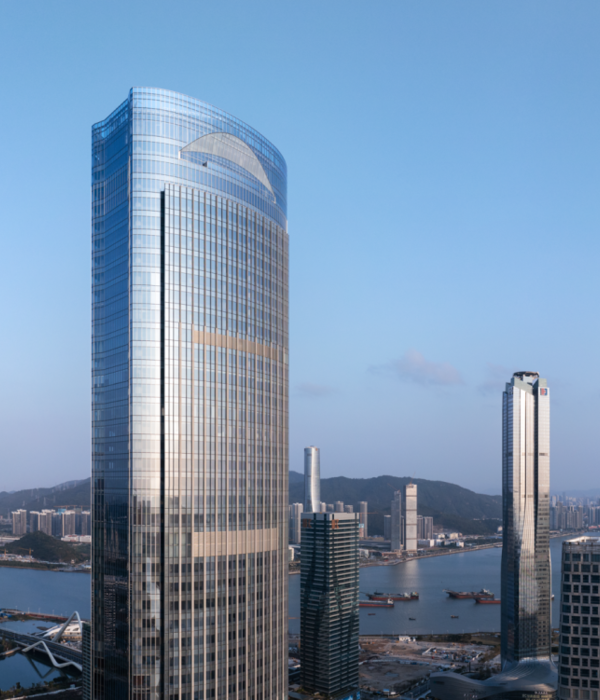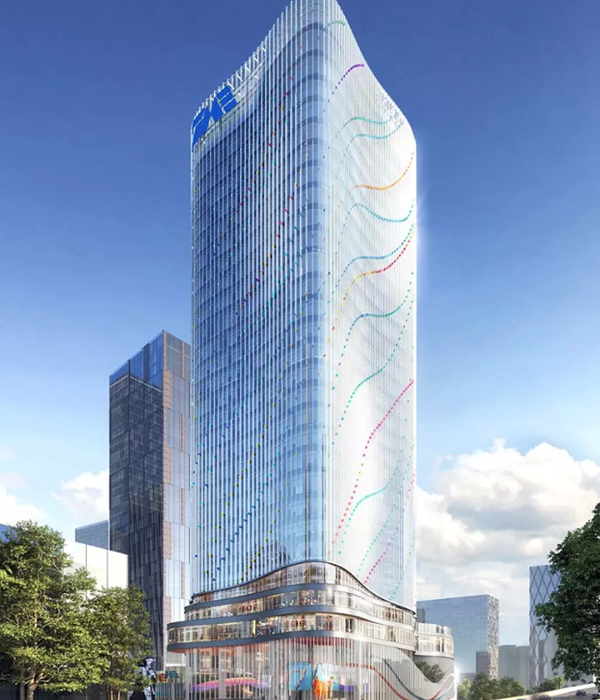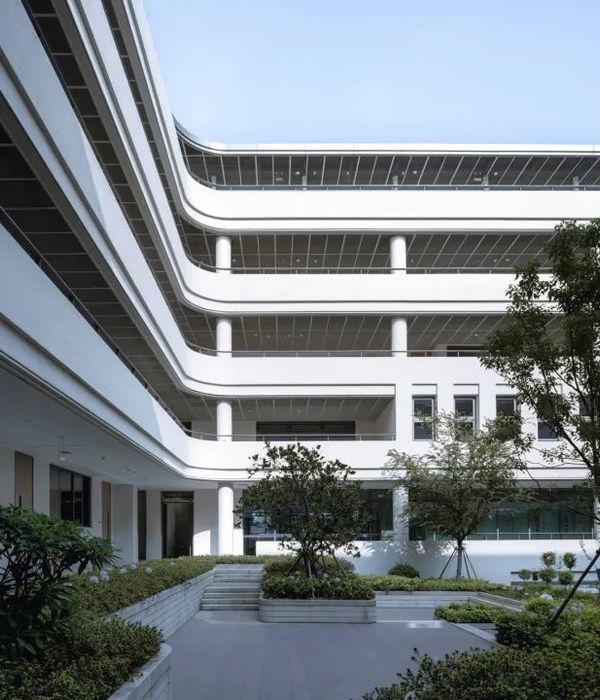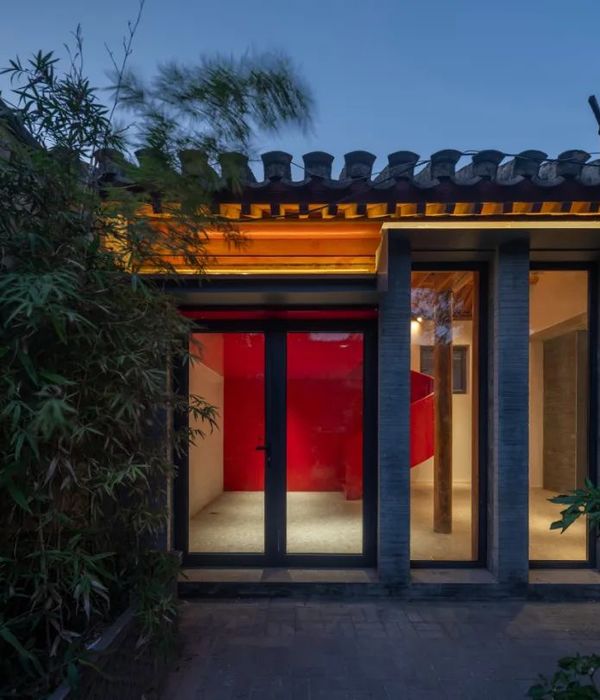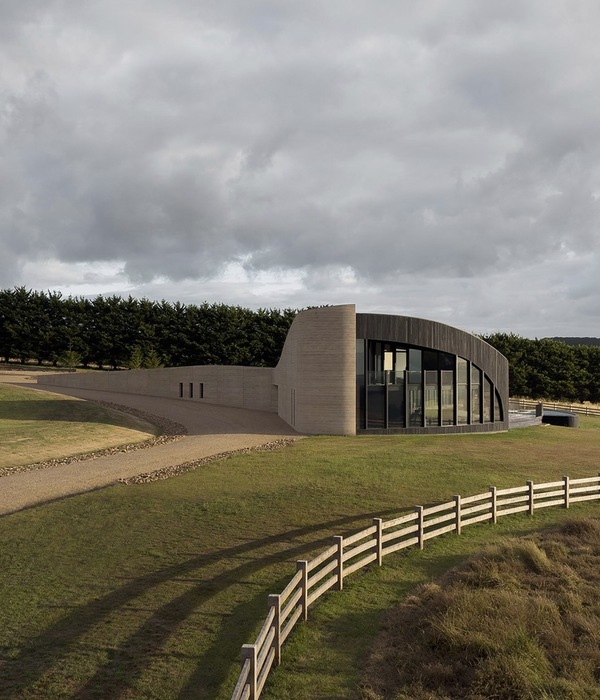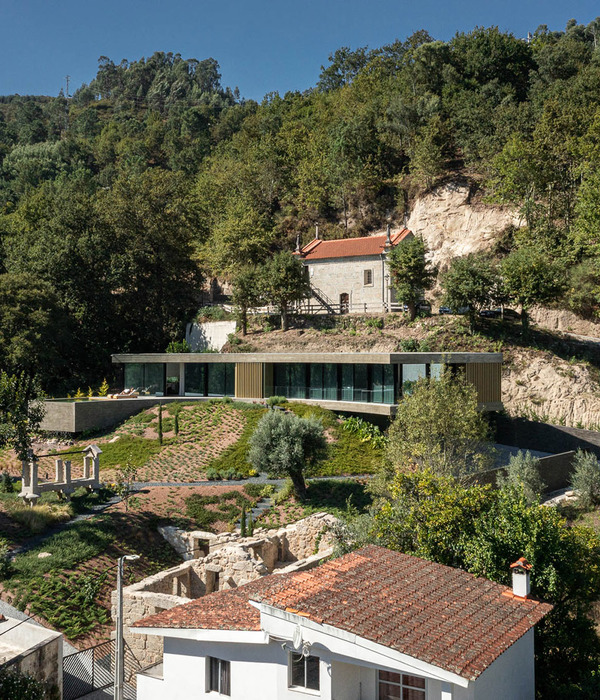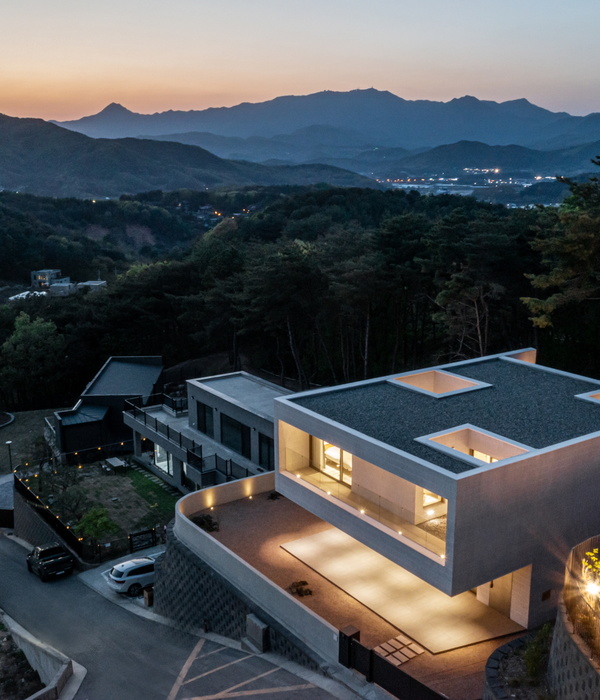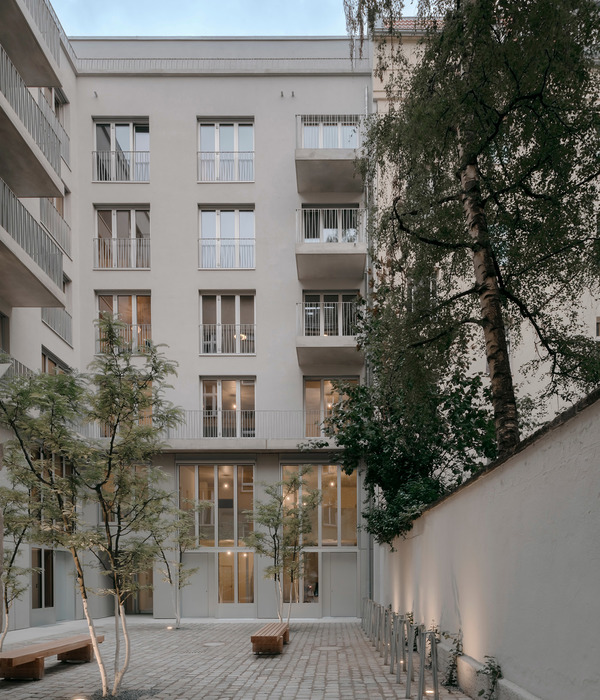The client wished to have the architect conceive a compact second home immersed in a woody lot in front of Mount Orford, in the Eastern Townships.
The one-acre lot, characterized by a hilly landscape, is part of a housing development dating back to the 1970s. At its highest point, the property is topped with a bedrock on which it is decided to strongly anchor the new construction.
The client’s functional needs are strategically distributed inside two independent volumes connected by a walkway forming a breach through the house. The main volume hosts the living and sleeping spaces, while the second volume contains functional areas such as a workshop and a guest bedroom/loft with its own bathroom. This physical distinction of both elements was a desire of the client in order to preserve each other’s privacy.
The orientation of the house on its site was mainly dictated by the desired view of the Mount-Orford. The living room, the dining room and the kitchen are facing the mountain located on the North side of the lot. The viewpoints are treated both as picture frames onto the nature and as wide panoramic glazed apertures overlooking the undulating landscape profile. The position of the house at the edge of the sloping lot magnifies the view as well as creating a floating sensation for the inhabitants.
Combining the desire for both a contemporary expression and inspiration from traditional architecture, the volume of the house adopts a gabled roof combined with sleek details such as the absence of roof projections, a mullion-less glazed corner with silicone joints and frameless window openings. Inside the house, white painted walls and ceilings, diamond polished concrete floor, lack of conventional baseboards are all minimalist characteristics reinforcing the simplicity and purity of the space.
Formally, the house is kept to its most elementary shape. The two buildings entities are divided by a six-foot wide exterior passage cladded in the same wood as the overall envelope. The overall impression gives the illusion that a natural phenomenon has split an initial entity into two distinct parts. The result is a gap that provides direct access to both volumes and to the deck on the southeast facade. Mostly, this passage offers a dramatic perspective framing the landscape behind the house.
The rooms find themselves logically divided inside the home. The main entrance is located within a breach, in the center of the volume, at the intersection of the two corridors; one in the axis of Mount-Orford, leading to the living areas and the other being parallel to the exterior passage provides access to the two bedrooms and a water closet.
As a result, an aura of simplicity and tranquility is induced from this dwelling, leaving room for the contemplation of the surrounding natural landscape.
Type: Cottage
Intervention: New built
Location: Eastman, Eastern Townships, Quebec, Canada
Area: 1300 sqft
Date: 2020
Photo credits: Ronan Mézière
[FR] Le désir du client fut de développer une résidence secondaire compacte plongée au cœur de la nature sur un terrain boisé faisant face au Mont Orford, dans les Cantons de l’Est.
Ce terrain d’un peu plus d’un acre faisant parti d’un développement de résidences secondaires datant des années 1970 possède une topographie accidentée. Formant une butte, le terrain offre en son sommet un plateau rocheux sur lequel vient s’ancrer solidement l’habitation.
Contenu sur une superficie de 1300 pi2, le programme est réparti stratégiquement dans deux volumes distincts de plein pied, mis en relation par une brèche traversant l’habitation. Le volume principal abrite les espaces de vie et de nuit, dans le second volume se trouve les espaces fonctionnels tel qu’un atelier jumelé à une chambre d’invités sous forme de loft avec propre salle de bain. La séparation physique de ces éléments de programme était un souhait du client afin de préserver l’intimité de chacun.
L’orientation du bâtiment fut déterminée par les vues sur les éléments naturels environnants. Les espaces de vie tel que le salon, la salle à manger ainsi que la cuisine vont alors s’orienter vers le Mont Orford situé au nord du terrain. La fenestration se veut cadrée, mais généreuse dans ces espaces afin de prendre avantage du panorama. Ce dernier est magnifié par l’effet de flottement procuré par l’implantation de l’habitation à la limite de la pente du terrain.
Désireux d’une résidence contemporaine inspirée par l’architecture des chalets traditionnels, la volumétrie de la maison adopte une toiture à pignons couplée à des détails minimalistes : absence de débords de toit, coin de façade vitré ou encore utilisation des joints de silicone en guise de meneaux. En-dedans, plâtre peint blanc aux murs et plafonds, dalle de béton polie au diamant, absence de plinthes conventionnelles au profit de plinthes encastrées, matérialités minimalistes permettent d’appuyer le style contemporain de la demeure.
Formellement, la maison est gardée à sa plus simple expression. Les deux corps de bâtiment sont divisés par un passage extérieur de six pieds de large habillé de bois tel que le reste de l’enveloppe. Ce revêtement lie les deux volumes entre eux tout en donnant l’illusion qu’un phénomène naturel est venu fendre la volumétrie initiale en deux parties distinctes. En résulte alors cette brèche offrant un accès direct aux deux entités, mais également offrant un passage jusqu’à la terrasse juxtaposée au salon orienté Sud-Est. Ce passage orné de bois offre une vue rigoureusement cadrée sur la végétation luxuriante en arrière de l’habitation.
À l’intérieur, les espaces sont divisés logiquement. L’entrée se fait dans l’axe du bâtiment, au croisement des deux circulations : une principale dans l’axe de la montagne, menant aux espaces de vie et séparant les deux chambres, puis une seconde parallèle au passage extérieur offrant un accès aux espaces de nuit.
Il en résulte une aura de tranquillité et de simplicité qui émane de cette habitation, laissant place à la contemplation de la nature environnante.
{{item.text_origin}}

